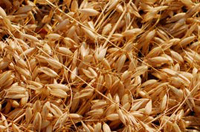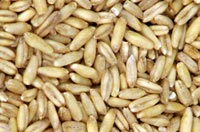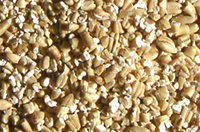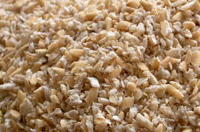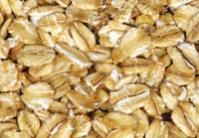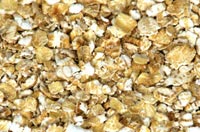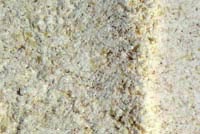Confused about all the different kinds of oats that are available?
This illustrated list will help you out.
|
Raw Oats, newly harvested This is what oats look like before the kernels (groats) are separated from the hulls and stalks. Admittedly, you won’t see them this way in stores, but we thought you’d like to see what they look like fresh from the fields. |
|
|
A groat is another name for a grain kernel. Whole oat groats are the result of simply harvesting oats, cleaning them, and removing their inedible hulls. You can most often find these in health food stores. They take the longest to cook. |
|
|
Steel Cut Oats If you cut groats into two or three pieces with a sharp metal blade, you get steel cut oats. They cook quicker than oat groats, because water can more easily penetrate the smaller pieces. Steel cut oats are also sometimes called Irish oatmeal. |
|
|
Scottish Oatmeal Instead of cutting oats with a steel blade, the Scots traditionally stone-grind them, creating broken bits of varying sizes, which some say results in a creamier porridge than steel-cutting. |
|
|
Rolled Oats – regular (old fashioned) Rolled oats (sometimes called old fashioned oats) are created when oat groats are steamed and then rolled into flakes. This process stabilizes the healthy oils in the oats, so they stay fresh longer, and helps the oats cook faster, by creating a greater surface area. |
|
|
Rolled Oats – quick or instant If you roll the oat flakes thinner, and/or steam them longer, you create quick oats and ultimately instant oats. The nutrition stays the same (these are all whole grains) but the texture changes – a plus for some people and a drawback for others. The good thing about having so many choices is that everyone can get exactly the taste they like best! |
|
|
Oat Flour Oat flour is a whole grain flour that can be used in baking, or for thickening soups and stews. |
Wondering about oat bran? Because oat bran is just the bran, and doesn’t contain the germ or the endosperm, it is not considered a whole grain. To learn more about what counts as a whole grain, see this webpage.
Photo credits: Grain Millers (Raw Oats, Oat Groats, Rolled Oats, Quick/Instant Oats, Oat Flour); Purcell Mountain Farms (Scottish Oats); Whole Grains Council (Steel Cut Oats).

